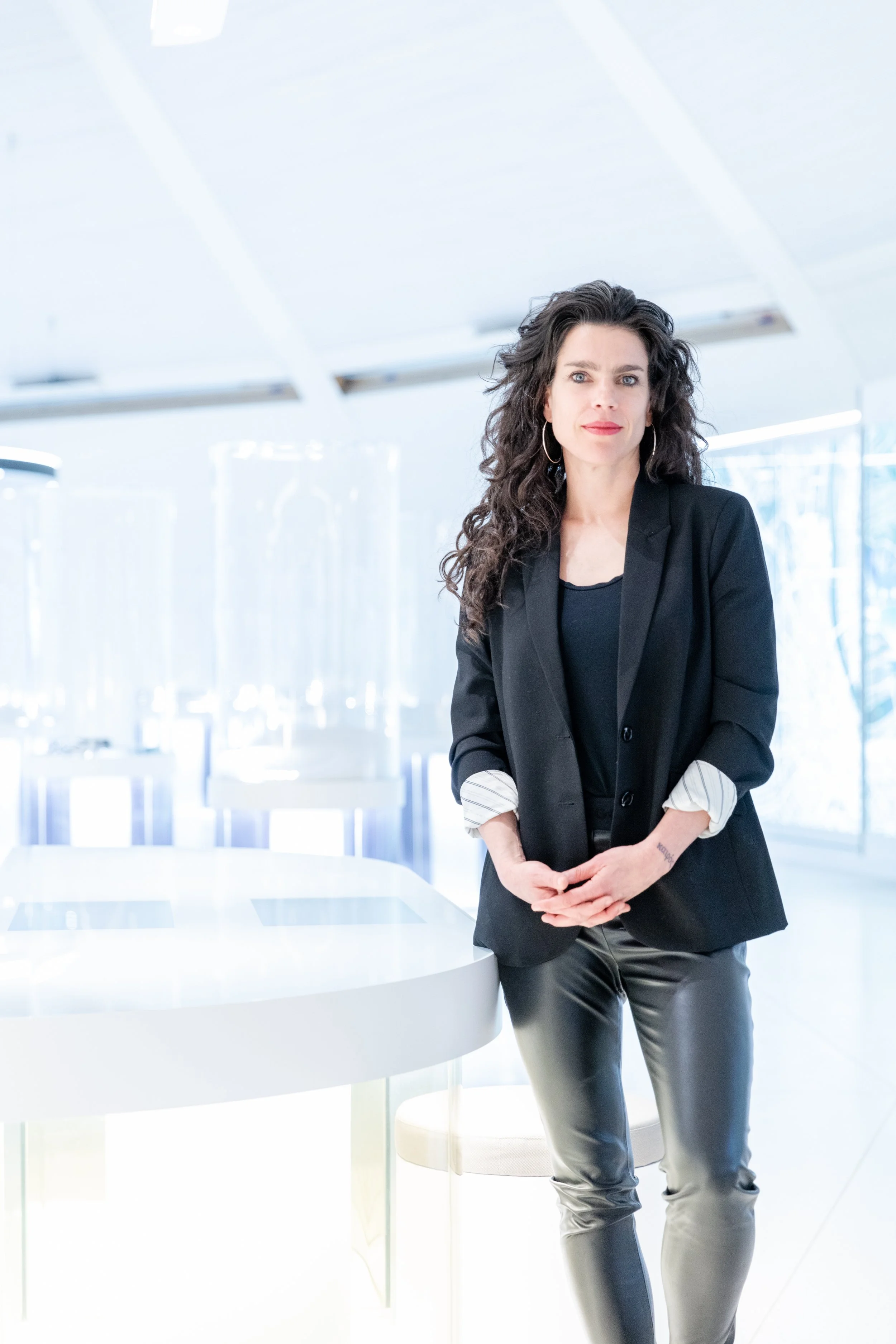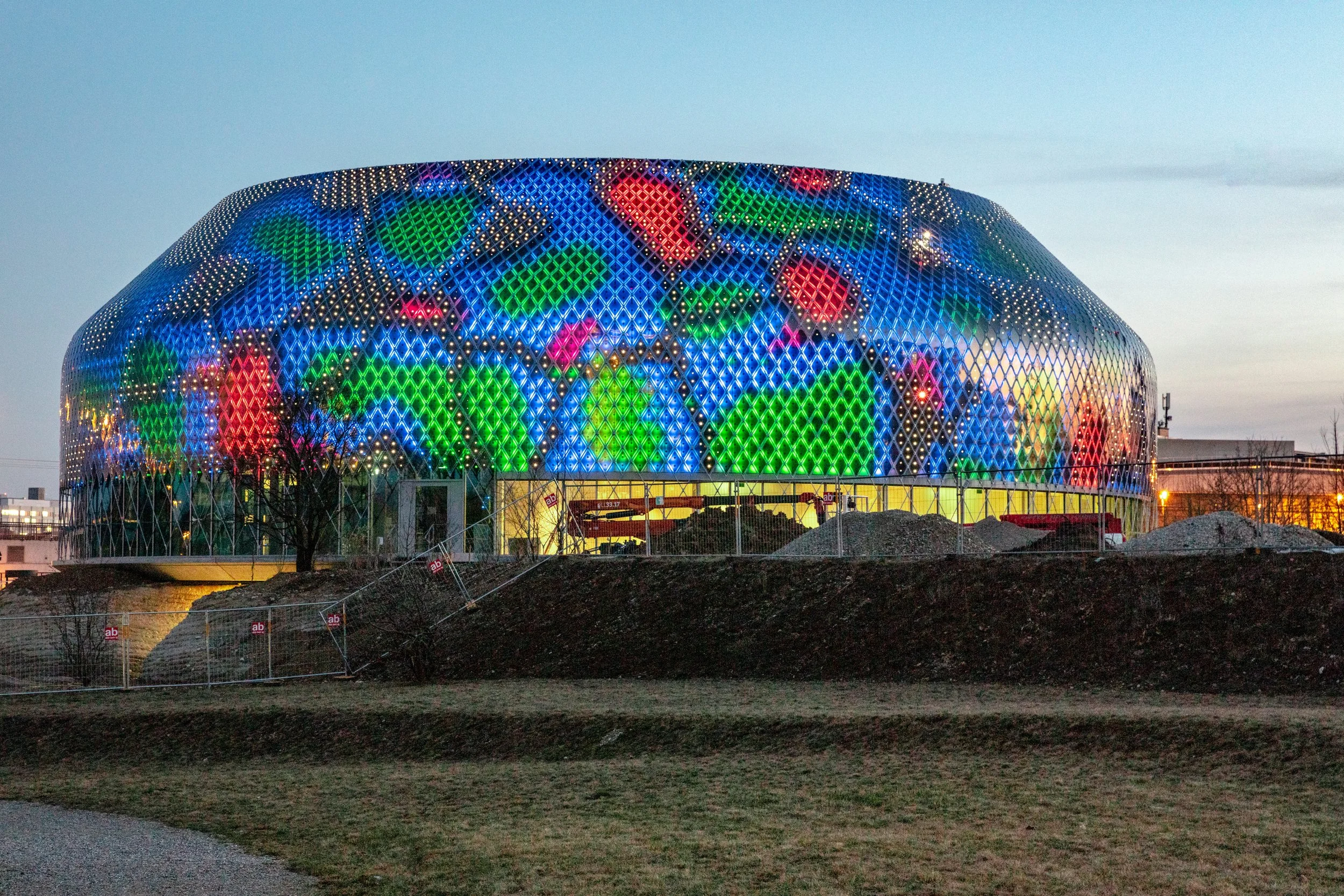VOLTA VOICES | NELLY RIGGENBACH
With connections to VOLTA Basel’s new venue at Klybeck 610, we speak to Nelly Riggenbach - Director of Communications and Engagement on the Novartis campus - one of the world’s leading medicine companies based in Basel. We explore how the city of Basel is built on creativity in the arts and science industries and Novartis’ links with art both historically, including the likes of Claude Monet, and inspiring artwork created today.
Nelly Riggenbach - Director of Communications and Engagement on the Novartis campus.
Hello Nelly! Can you share a little info about yourself, Novartis and your role there?
Where to start! I am a Basler and grew up surrounded by both art and Life Sciences – finding them both fascinating. My study background is interaction manager and in my role at Novartis, where I am responsible for site communications, I am doing exactly that: “managing interactions”. Together with my team we are passionately bringing the medicine industry and society closer together by inviting a broad public to learn what we do and why it matters.
Last year, Novartis opened the Novartis Pavillon with its exhibition Wonders of Medicine – and we also opened our campus to the public. Two important steps to strengthen the dialogue with the broad public.
Novartis was created in 1996 with roots of developing innovative healthcare products going further back by 250 years. How do you think Novartis has helped shape the culture of Basel city?
One may think that a company specialised in such a complex field as healthcare innovation has always been active in this domain. But the origins of our company actually lay in the dyestuff industry. Our predecessor companies produced colours. Fun fact for art lovers: We even had touchpoints with Claude Monet! His older brother, Léon Monet, was a colour chemist at our predecessor company Geigy. It is said that Léon Monet actively supported his brother and other painter friends, such as Camille Pissarro, through his passion for art and played a key role for the success of early impressionist painters. Still today, the colourful façade of Forum 3 on the Novartis Campus, designed by Zurich artist Helmut Federle, reminds our associates of our roots in the dyestuff industry.
Looking back at our history, I would say that there are countless other examples as to how Novartis and our predecessor companies helped to shape the culture of Basel. Perhaps the most fundamental of them all is the economic wealth our industry continues to provide to the region. With 800 life-sciences companies today, Basel is a world-class location for medical science and innovation – and the chemical-pharmaceutical industry is a key pillar of Switzerland’s overall economy. To provide a very tangible example: One job at Novartis secures three additional jobs at other companies here in Switzerland. Although I am a firm believer that art is for everybody and not limited to the wealthy, I am convinced that this economic stability played a key role in making Basel the international hot spot for art and culture that it is today.
Has Novartis been involved in creativity and artistic practices within science?
Yes, we have. Art is an important part of our corporate culture at Novartis. It reflects the history of the company and its origins in Basel and, at the same time, stands for the innovative strength and creativity that we are known for. We engage both ways: We want our scientists to be inspired by the art around them, and we want to promote science-inspired art to show the world the beauty and curiosity of science.
One early example is Niklaus Stoecklin’s “Chemiebild” or “Die neue Zeit”, painted in 1940. This work, commissioned by the then Sandoz director and art collector Arthur Stoll, shows the various steps of drug development on an impressive 141 x 221 cm (oil on canvas).
Wonders of Medicine exhibition, from lab to patient, Novartis Pavillon. Courtesy of Novartis
A recent example, which I personally find fascinating, is Lynn Hershman’s Antibody – an antibody that was assembled following the structure of amino acids and their symbols that exactly correspond to the artist’s name, LYNNHERSHMAN. Despite the odds, the antibody LYNNHERSHMAN is active and responsive. The ties between Novartis and this incredible piece of art are strong: The idea was born during Lynn’s visit at Novartis Institutes for BioMedical Research (NIBR), and Novartis scientist Thomas Huber actually made the LYNNHERSHMAN antibody. But it doesn’t stop here. Today, the work is publicly displayed at the Novartis Pavillon.
VOLTA is all about discovering the art of now. How is Novartis bridging the gap between art and science now?
We keep bridging the gap between art and science and continuously come up with innovative ideas. A literally shining example is the zero-energy media façade of the Novartis Pavillon, on which we display science-inspired digital art. The media façade is provided by a construction of photovoltaic cells and LED lights that are sustainably operated with solar power. A total of 10,000 organic photovoltaic cells that are equipped with more than 30,000 LEDs enable us to display basically any type of text and images.
Together with the House of Electronic Arts (HEK) in Basel, our global art curator Martin Furler selected artists through an open call to produce images inspired by the world of medicine and the environment. The works were created by Esther Hunziker, Daniel Canogar and artist duo Semiconductor. The technical implementation was carried out by Basel-based studio iart.
To my knowledge, this is the most visible science-inspired art installation ever done by Novartis – and it always fills me with pride when I see people stopping and watching in awe from near and far when the luminous show starts at sunset.
Illumination of zero-energy media facade of the Novartis Pavillon – artwork by Semiconductor. Courtesy of Novartis
Novartis has always had an architectural presence in Basel with this legacy continuing at your new campus. Can you share a little about the aims of your new campus?
Almost 20 years ago, Novartis decided to transform its headquarters in Basel into a campus of knowledge dedicated to scientific innovation and learning. It was a major move, as it signalled the end of a century-old industrial tradition on the St. Johann site and marked the beginning of a new era with the creation of a unique collaborative workplace.
Vittorio Magnago Lampugnani, a well-known architect and urban designer from Italy, was tasked to bring Novartis' vision of a place for innovation, learning and encounter to life. With these three principles in mind, the Novartis Campus was designed to be a catalyst for new ideas, inviting people to think and work differently. This is reflected in every corner of the Novartis Campus - offering countless places such as squares, parks, cafés and restaurants, inviting people to communicate and collaborate. Architecture and art are carefully curated to further inspire our associates and ultimately foster innovation. After David Chipperfield being honoured with a Pritzker Price this year, we now have nine buildings designed by Pritzker Prize winners.
As we have recently opened the Campus to the public, we warmly invite you to pay us a visit from Monday to Friday during business hours to experience this inspiring environment.
And what is Novartis link to Klybeck 610?
Courtesy of Novartis
The building 610 on Klybeck was built in 1967 by Suter & Suter Architects as one of the first associate canteens of its time. Back in the days, people left work to enjoy their lunch meals at home or brought their own food. Bringing colleagues together at one table to jointly enjoy a meal was quite a novelty. In peak times, the canteen produced 4000 meals every day. Today, lunch for our associates is served in multiple restaurants and canteens on Campus, on the other side of the Rhine. We are excited though to know that with VOLTA, the original spirit of bringing people together will have a revival.
Do you like collecting art? Which artists do you love?
Not sure if I deserve the title of a collector but my home is full of art – art of high emotional value and very eclectic. To restrain myself from writing an extensive list of all the artist that I love, I limit myself to mention Jenny Holzer, as there is a beautiful piece of her art on the Novartis Campus that inspires me daily.
Find out more about Novartis’s Art Pavilion here.
VOLTA Basel takes place from Monday June 12 to Sunday June 18 2023. Purchase your tickets here.




